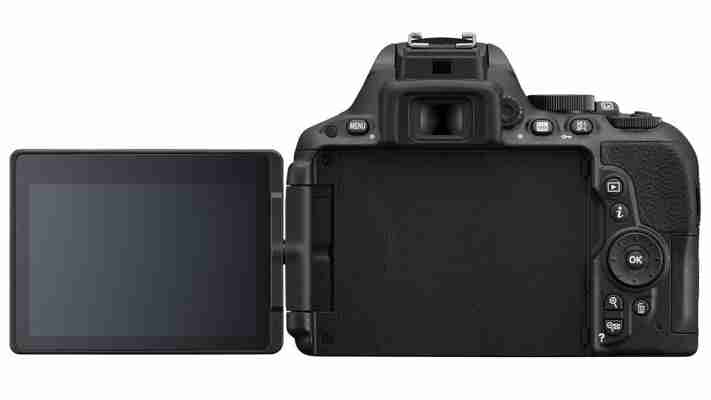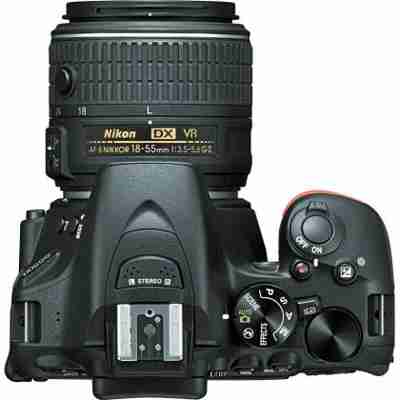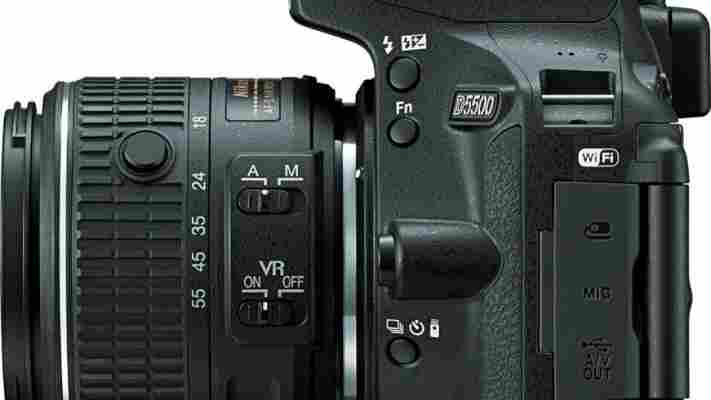We reviewed the Nikon D5500 back in 2015 and has since dropped in price. It can now be found for around £436 and can be found for even cheaper if bought second hand through eBay . The camera is hard to source as it has been discontinued, but is it now worth its price tag?
The Nikon D5300 that we also reviewed was a case of close but no cigar. There's no shortage of superb SLRs and compact system cameras (CSCs), and for around £650, the price we originally reviewed the D5300, and at the time didn't do enough to stand out. Note: Review, specs based on 18-55mm VR II kit.
It's a bit of a surprise, to see the D5500, with the D5300 being so similar. The LCD screen is now touch-sensitive, GPS has disappeared, a couple of buttons have moved and the command dial has been redesigned. There's a new Picture Control preset called Flat that's unlikely to set the photographic world alight, although it's more useful for video capture. The best change is the increased battery life, from 600 to 820 shots. That's roughly double what rival cameras manage.
Nikon D5500 review: Build quality and controls
Our gripes with the controls in Nikon's consumer SLRs are well documented, with an over-reliance on menu navigation at the expense of direct button access. As such, the move to a touchscreen is significant. Pressing the "i" button – either the physical button or the on-screen icon – calls up a grid of 14 functions, and tapping the screen to choose a function and again to adjust its value was generally much quicker than doing so via the buttons. Sadly it's not possible to adjust settings using the command dial.

Navigating the main menu using the touchscreen is faster too, but we still can't summon any enthusiasm for this menu system. It's arranged in a haphazard order with key functions in weird places. For example, the first two options in the Shooting Menu allow you to change the file and folder names, whereas the option to toggle Auto ISO on and off is tucked away in a submenu. This should really be available alongside the manual ISO speed controls and accessible from the "i" button, and at the very least right at the top of the main menu. Another long-standing grievance is how the self-timer switches off after every shot, even when the two-second timer is selected for steady shooting with a tripod. It might sound trivial, but it's pretty tedious having to re-enable it after every shot.

The touchscreen is a big benefit in live view mode, allowing the autofocus point to be moved instantaneously. The fully articulated design and unusually large 3.2in screen size are particularly welcome in live view mode too. Live view autofocus remains slow, though, taking between one and three seconds to lock onto subjects.

Surprisingly, the touchscreen also plays a role when shooting with the viewfinder. At first we couldn't work out why the camera beeped each time we looked through the viewfinder. Then we noticed that the grid to help with composition appeared and disappeared each time. It turned out our inconveniently placed nose was to blame – something you too will discover if you use your left eye to look through the viewfinder. Apparently, Nikon expects people to use their right eye instead, whereupon the right side of the screen can be used as a finger-controlled surface. Switching the grid on and off is a bit of a wasted opportunity but there are lots of other options, including focus point selection. Moving the selected point with a quick gesture on the touchscreen was by far the quickest method we've used for a phase-detect autofocus system.
Nikon D5500 review: Focus and Speed
It helps that the D5500's 39-point autofocus is particularly well specified for this class of camera (the Canon 750D offers 19 points while the Pentax K-S2 has 11). The D5500's more generous allocation makes it easier to line up a focus point with the subject rather than the other way around. It also facilitates subject tracking – something its rivals lack. Select 3D Tracking and from the moment the shutter button is half-pressed, the active autofocus point moves to follow subjects around the frame.
It's a great feature for capturing moving subjects, but the D5500's continuous performance is nothing to get excited about. It managed 5fps for 21 frames before slowing to 2.5fps for JPEGs – a typical result for SLRs at this price but rival CSCs range from 7fps to 11fps. Still, we're pleased to see that enabling Auto Distortion Control in the menu (which skews JPEGs to compensate for lens distortions) no longer takes a heavy toll on continuous performance.
For RAW capture, the D5500 managed just six frames at 4fps before slowing to 1.1fps. Switching from 14-bit to 12-bit RAW files gave better performance, at 5fps for 9 frames, slowing to 1.4fps. Again, this is a typical result for an SLR at this price, but rival CSCs are much faster and keep going for longer. SLR technology used to be synonymous with fast performance but it's a reputation that's no longer deserved.
